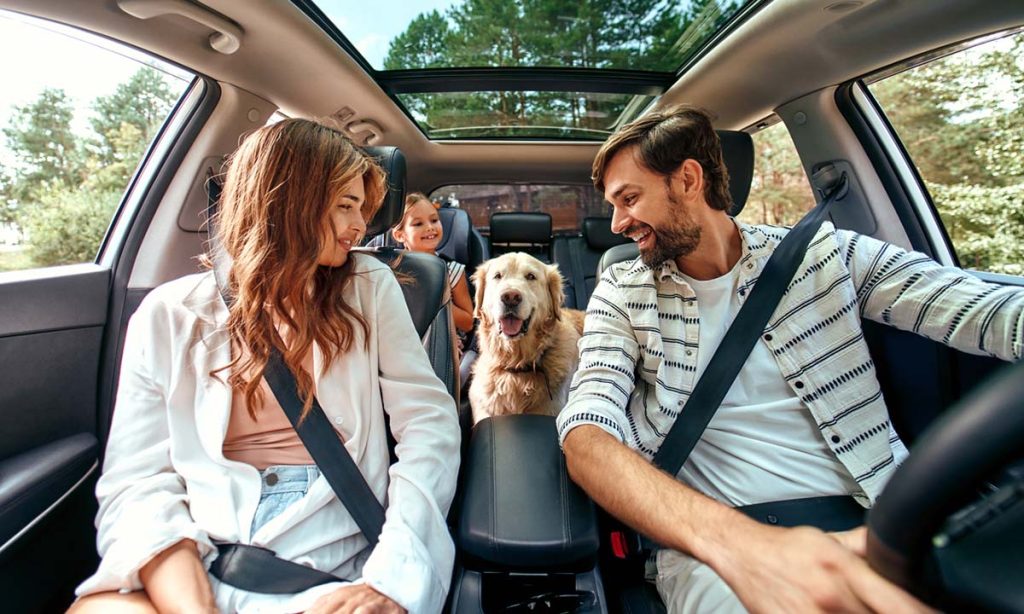Summary
Even a few minutes in a parked car can put your dog’s life at risk—even with the windows cracked.
-
Temperatures inside cars rise fast, even on mild days
-
Dogs overheat quickly and can’t cool down like humans
-
Heatstroke can be fatal within minutes
-
It’s illegal in many states to leave pets in hot cars
👉 Don’t take the risk. Learn how fast things heat up, what signs of heatstroke to watch for, and what to do in an emergency in the full article. Keep reading to protect your pup this summer.
If you have to ask, “can I leave my dog in a hot car?” The answer is a resounding “no.” Absolutely not. Never leave your dog unattended inside of a car. And if you see a dog left in a hot car? The common airport adage applies: If you see something, say something.
Some states even allow you to legally DO something (e.g., smashing the car window to rescue the animal). A little more on that later.
As the outside temperature rises, so does the risk to our furry companions, especially when it comes to leaving them in parked cars. It may seem harmless to “just run in for a minute,” but running errands you assume won’t exceed five minutes can turn deadly just as quickly.
How Temperature Changes Work in Parked Cars

If you think parking in the shade or leaving the windows open makes it ok or less dangerous, think again. The American Veterinary Medical Association warns that the temperature inside a vehicle can rise rapidly: by about 20 degrees Fahrenheit in just 10 minutes and nearly 30°F within 20 minutes.
Research indicates that the longer the car sits without air conditioner, the hotter it gets. After an hour, the interior can be over 40°F hotter than the outside air. That means on a 70-degree day, the inside of your car could reach a dangerous 110 degrees or more.
As you can see, it does not take a long period of time for a car to overheat–even when it’s not a hot day. Imagine what that does to your furry friend’s body temperature!
A State-by-State Breakdown of Good Samaritan Laws and Pet Safety

According to Michigan State University’s College of Law, in 32 states and the District of Columbia, it’s either illegal to leave an animal in a dangerous situation inside a parked vehicle, or rescuers are protected from lawsuits if they step in to save a pet in distress.
About 14 states have enacted laws that allow any person to rescue a distressed animal. Those states include:
- Arizona
- California
- Colorado
- Connecticut
- Florida
- Indiana (rescuer must pay half of the damages)
- Kansas
- Louisianna
- Massachusetts
- Ohio
- Oregon
- Tennessee
- Vermont
- Wisconsin
Other states have statutes where only law enforcement, animal control, or emergency responders can break in to rescue an animal in an emergency situation. Those states are:
- Washington
- Nevada
- North Dakota
- South Dakota
- Minnesota
- Illinois
- Georgia
- North Carolina
- Virginia
- Maryland
- Delaware
- New Jersey
- Pennsylvania
- New York
- Rhode Island
- New Hampshire
- Maine
For more information and links to each state’s specific legislation, visit the Animal Legal Defense Fund’s website.
What To Do If You See a Dog in a Hot Car
If you see a dog alone in a hot car:
- Assess the situation. If the dog is in obvious distress, call 911 immediately.
- Note the car’s details. Take pictures and write down the make, model, and license plate.
- Find the owner. Ask nearby businesses to make an announcement.
- Wait for help and/or take action. If you live in a state with a Good Samaritan law, do not hesitate to take action. If not, stay by the vehicle until assistance arrives or the owner returns.
Signs of Heatstroke in Dogs
Pet owners should familiarize themselves with common symptoms of heatstroke in dogs. Signs include:
- drooling
- excessive panting
- abnormal gum color
- lethargy
- disorientation
To keep your dog cool and protect them from overheating in hot weather, no matter where they are, always provide plenty of water. It is crucial to keep your dog safe and avoid putting them in potentially life-threatening, dangerous conditions.
Sources
“Pets in Vehicles.” n.d. American Veterinary Medical Association. https://www.avma.org/resources-tools/pet-owners/petcare/pets-vehicles.
No. 2024. “No Heat Stroke.” No Heat Stroke. 2024. https://www.noheatstroke.org/vehicle-heating.
“Table of State Laws That Protect Animals Left in Parked Vehicles | Animal Legal & Historical Center.” n.d. Www.animallaw.info. https://www.animallaw.info/topic/table-state-laws-protect-animals-left-parked-vehicles.
This content is for informational use only and does not replace professional nutrition and/or medical advice, diagnosis, or treatment. It is not a substitute for and should not be relied upon for specific nutrition and/or medical recommendations. Please talk with your veterinarian about any questions or concerns.





